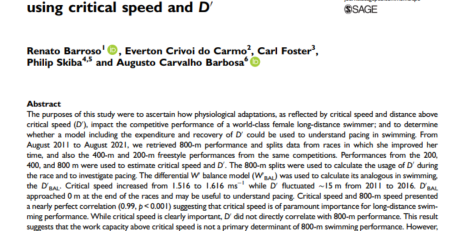Body composition responses to the strength training and its relationship with performance of competitive swimmers
One of the effects of strength training is the modification of body dimensions. If increased excessively, performance in the water may be hindered due to increased resistance. Question: Does dry-land strength training alter body composition? According to our data, the answer is no! Further details can be found in the article. READ!



Deixe um comentário